|
Good afternoon from Whiskey Flats RV Park in Hawthorne, Nevada, about halfway between Las Vegas and Reno on U.S. Route 95. It's a chilly 49 degrees here with Cirrus Clouds overhead. Looks like we're in for a little more precipitation tomorrow, snow for the upper elevations, rain for us in the high desert. There are no "reported" cases of Corona Virus in Hawthorne. When I went into the Safeway market yesterday, I overheard two people talking. A man, who looked to be in his sixties says to the woman, "Well, on the bright side, we don't have no virus here yet," to which the woman replied, "Yeah, but that ain't stopping folks from coming here and buying up our shit!" We traveled here yesterday after spending 5 days at Twenty Mile Beach about 18 miles north of our current location. We'll be here for three days, stocking up, doing laundry, then we'll begin moving north towards Sisters, Oregon and the home of friends of Melanie's who have graciously agreed to allow us to boondock with them. Leisure Travel Van Owners Random thoughts on our first-world first boondocking Corona Virus Distancing experience at Twenty Mile Beach BLM. A free place to park Miranda for a while is a good thing especially when the place is as epic as Twenty Mile Beach and Walker Lake. Not much by way of wild life though I did see a large Jack Rabbit on a walk. I've never seen a rabbit move as fast as that one. We saw Big Horn Sheep along the road on the way into Hawthorne. With empty grey and black tanks and 30 gallons of fresh water, we can comfortably spend 5 days off the grid. We had abundant desert sun and a few days of partly cloudy skies. Our 400 watts of solar power kept our batteries fully charged during day even as we were charging devices or watching TV. We ran the generator only to operate the oven/microwave in the evening. Making sure everything is unplugged and the inverter is off before bed allowed us to comfortably run our furnace (set on 60 degrees F as temps were in the mid 30's) at night and have anywhere from a 12.3-12.5 battery reading in the morning. Over the last 17 months our temperature comfort zone has become lower than it was living in a bricks and mortar home. Normal comfort zone is generally between 68 and 72 degrees F. Lower humidity in the desert helps. While getting out from under our comforter to turn up the thermostat (if the heat is even on) can be bracing when it's 45 degrees or less in the van, once the thermostat is adjusted to 70 degrees F., the sun is up and shining on the van, and temps rise to the low to mid 60's, life is good. Dress accordingly. Taking a "sponge bath" (my grandmother's term) using the sink and a wash cloth to rinse off about halfway through five days of boondocking works just fine. We had about 15% of our 30 gallons of fresh water left when we arrived at Whiskey Flats yesterday. We make coffee using a Chemex coffee pot. When plugged in, we use a Bodum electric water kettle (1100 watts). When boondocking, we heat water on the stove and pour it into the Bodum water kettle to make our pour-over coffee. We do this because we're usually up before 7:00 and running the generator at that hour doesn't suit us or our neighbors, we imagine. Our awning has a wind sensor. If the wind blows directly perpendicular to the van, it has the potential to get under the awning, especially if you are located up a hill, making the awning into a sail blowing it upwards and towards the van. In our case the sensor didn't immediately retract the awning as it's done on a few occasions and I had to jump up and grab one of the awning arms to bring it down so it could retract. Probably never happen exactly that way again, but still. We remain grateful for the quality of workmanship and engineering that goes into our LTV house car. Small things requiring repair have happened but not often in 17 months. Most recently, one of our table hinges broke. I contacted the good folks at Leisure Travel Vans and our hinge will be waiting for us in Oregon at our friends' home when we arrive. LTV even threw in an extra hinge. While traveling full-time is a choice for us, we continue to meet folks on the road traveling alone who've lost their homes and are living in their cars or SUV's. Such was the case for at least two people who were camped at Twenty Mile. Be grateful. Be kind. The good news over the past few days is there continues to be a good number of places where we can camp that remain open and available for us. When we leave Hawthorne, we'll head to northern Nevada, then into Oregon where we'll be staying in Burns, Oregon for a night.
Campendium State by State Campground Closures Due to COVID-19 Don't' Panic about shopping, getting delivery or accepting packages Coronavirus in the U.S.: Latest Map and Case Count Safe travels.
0 Comments
Good afternoon from Twenty Mile Beach where we've been in residence for a few days. This is the first time we've camped on land managed by the Bureau of Land Management. There is no cost to camp here and we can remain for 14 consecutive days. Cue This Land Is Your Land. Under normal circumstances Twenty Mile Beach would be a spectacular venue to camp. This time of year the mountains to our southwest are covered in snow (Yosemite National Park is almost directly west over the mountains). The views all around the lake are amazing. We're ten miles from the nearest town, Hawthorne, Nevada. People camped here are spaced out nicely so no one is closer than about a quarter mile away. Under current circumstances, however, Twenty Mile provides us with the perfect venue to social distance. On our way here we stopped in Sacramento and bought groceries and replenished our propane and filled Miranda's tank with diesel fuel. Since I'm the designated person to venture out, every time I venture into a grocery store or other such venue, the clock begins running anew. Only days will tell the tail of whether I've contracted the virus. I've been overly careful about cleanliness, but still. We've had plenty of great Nevada sunshine so we have more than enough power via our 400 watts of solar capacity to charge our devices, watch a little television in the evening and run our furnace in the mornings. We have a generator for any cloudy days. We started with 30 gallons of fresh water and empty grey and black tanks (also 30 gallons capacity each). As of this afternoon, after about 3 days, we still have 65 percent of our fresh water. Our Verizon services are very good in this location. After some discussion this morning, and checking local weather forecasts, we have decided to remain here for the time being. How many days we'll remain up to our 14 day limit is uncertain at this point, mainly because weather to our north, the preferred direction of travel when we leave, will be wintery for a few days. Right now the temps are moderate (62 degrees Fahrenheit), but there's currently a stiff southerly wind blowing at 16 miles an hour with gusts over 20. High desert winds we know you well. When time comes for us to move, we'll be traveling under circumstances we have not experienced in our nearly 15 months on the road. Serious campground closures due to COVID-19. The only reason our last campground in Dixon, California remains open is because the personnel also have an essential governmental function.
Maybe keeping a campground open for full-time travelers should become an essential service. The only thing worse may be all the restaurant closures. 😎 As I type, most of the National Parks are closed or closing, all Army Corp of Engineers parks are shutting down, some chain commercial campgrounds are closed or closing, how many are closing is changing on a daily basis. State Parks are closing. Nevada state parks are closed as are California's. We have two services we use as supplemental camping for a day here and there, Boondockers Welcome and Harvest Hosts. How many of these hosts will still be around is uncertain. I'll be checking Campendium periodically for up-to-date closures as I begin to figure out our next move. I received an email from a full-time traveler who is currently in Sedona, Arizona and saw a review I'd written on Campendium about Twenty Mile. She wanted to know if there was space for her here. Plenty, I said. Since we are self-contained and can be off the grid for days at a time, our real immediate issues are groceries, fuel, water, and being able to empty black and grey tanks periodically. We can and have parked on a street overnight. That works just fine. The last couple of times I was in a grocery store everyone seemed to know the new rule, keep six feet of distance between your fellow shoppers. Bottled water seems to be making a come back to store shelves; bread, hand sanitizer, not so much. Fuel is about a dollar a gallon less expensive in Nevada than California. The bright side of life, eh? We seem to be entering the Beta Mode of traveling full-time. There are sure to be some unexpected consequences or blips along the way, but we look forward to figuring out the new world of travel and improving on this life where possible. While we miss our weekly communion with Episcopal Churches, their parking lots, and the good people doing great social justice work, we know their absence from our life is but a temporary condition. Melanie is still very much on the EPF job. We hope everyone will continue to stay safe and sane. Watch this space and don't look at your 401-K. We're out here about to find out how running this operation in Beta Mode works. And you may find yourself In another part of the world And you may find yourself Behind the wheel of a large automobile And you may find yourself in a beautiful house With a beautiful wife And you may ask yourself, well How did I get here?--Once In A Lifetime Good afternoon from Dixon, California where Melanie and I are in residence at Dixon May Fair Campground. With Governor Newsome's order yesterday, we are doing our part by staying in our relatively secluded spot in the campground. The only exception to our current social distancing exercise has been a couple of bicycle rides to the grocery store, the bank and post office over the past few days. May Fair has about 20 full hook up sites, two of them occupied. I'm told the only reason the campground continues to be open is the personnel in the office also conduct essential services for Dixon. Fortunate for us. I'm currently the designated hitter for all outside errands. We hope to decrease our chances of contracting COVID-19. We know, however, because we live in really close proximity to each other in the van, if I contract the virus while out on an errand, Melanie will most likely come down with it too. We're both in overly cautious mode. I was very pleased to note everyone in the grocery store today was keeping the requisite six feet of distance from each other. There are still no sanitizer products (we have plenty), not much bread or toilet paper (we have enough), but bottled water seems to be making a come back. There were very few cars on the road. Aside from the stock market careening all over the map, and being in places in California having a good many cases of the virus, Melanie and I feel very good about our travels. Our mobility is a real plus, at least ostensively. We're out of Dixon early on Sunday morning, stopping briefly in Sacramento for groceries, then we'll travel into a pretty remote area of Nevada for some days where there are very few reported virus cases. A very special shout out to our friends, Bill and Arleen Tarantino who have a great home up on a ridge outside of Carmel-by-the-Sea, California, for inviting us to boondock with them for a few days. They graciously fed us, let us do laundry and shower, and led us on a few great hikes around the area, including on their property where they are working on a series of great trails. Their ridge top property tops our list of the best boondocking we've done. We continue to be amazed and grateful for the generosity of good friends along our ways. I suppose the only problem, aside from the obvious virus thing and, if you can actually call it a problem, we have at the moment is deciding our direction of travel. While Melanie continues the work of EPF apace, we have no scheduled face-to-face church obligations for (hopefully) the short term as all church services and meetings are becoming virtual events.
It's still a bit cold for the more northern latitudes (Oregon and Washington) we intentioned. Not to mention they have more reported virus cases than some other places. As state and national parks continue to close, at least in the short term, we'll figure our rudderless direction on the fly and hopefully this too shall pass. It is the end of the world as we all know it, we're fine. Y'all be mindful and safe out there. Carmel Valley Ranch Open Space Good afternoon from Pismo State Beach, Pismo Beach, California. We're here over the weekend as we continue to move northward. Miranda is parked in the Oceano Campground in Oceano, California just south of Pismo Beach. After leaving St. Cross in Hermosa Beach, California, we traveled to Ventura, California where we spent four days parked in Foster Residence Park about six miles east of Ventura. We'll be parked in Carmel-by-the-Sea, California next weekend where we'll be visiting with a friend of Steven's and her husband and family from my days living in Columbus, Georgia. Since I've not been posting to Facebook since just after Mardi Gras, for those interested, here's some of what I've been reading with Money Quotes, of course: George Wallace Tapped Into Racial Fear. Decades Later, Its Force Remains Potent Money Quote: [Wallace's] appeal for many white working-class men and women extended beyond Alabama’s borders and even beyond matters of race. When he ran for president — briefly in 1964, more substantially in 1968, 1972 and 1976 — he found ready support among white ethnic groups in the industrial Midwest, which even then were wilting economically as factories closed and populations migrated south and west. Perhaps not coincidentally, it is the very region that gave Mr. Trump his surprising triumph in 2016. The two men fired up crowds in similar fashion. Both appealed to “forgotten” Americans, stoking fear and loathing of “the other” — blacks in Mr. Wallace’s case, immigrants in Mr. Trump’s (though he also has had race cards up his sleeve, as with his embrace of “birtherism” to discredit President Barack Obama). The message from both was that a nefarious other, enabled by a bumbling government, was stealing work and wealth from upright Americans. “Wallace understood that there were people who were hurting, struggling, losing jobs,” B. Drummond Ayres Jr., who long covered the South for The Times, told Retro Report. “He tapped into that and appealed to that, because folks that are struggling often feel put upon.” The similarities between then and now are unmistakable. The Pied Pipers of the Dirtbag Left Want to Lead Everyone to Bernie Sanders Money Quote: The fivesome of “Chapo Trap House" are not the only bards of the new American left — there is “Red Scare” and another whose name cannot be printed — but they have led the way for a movement that together generates millions of dollars a year. They are on their way to becoming the socialist’s answer to right-wing shock jock radio. Their primary targets, in evidence at that show in Iowa, are not the Republican Party or even Mr. Trump but rather centrist liberals, whom they see as the major obstacle to a workers’ revolution. In blurring occasionally violent humor, jovial community meetups and radical politics, they are the Tea Party reborn for progressives, and for their fans the appeal is in a bawdy offensive balance to cautious mainstream liberal politics. They are known collectively as the Dirtbag Left, a shorthand they embrace that winkingly dispenses with any notion of liberal purity or inclusion, a defense mechanism that doubles as a nickname. Most of the podcast fans would never say out loud what they are listening to onstage or through their AirPods on the commute. It’s offensive, even as a joke. So why do so many progressives want to hear it? Trump is pushing a dangerous, false spin on coronavirus- and the media is helping his spread it Money Quote: Their logic seems to be that the drastic stock market declines in recent days are the result of media overkill, not legitimate business concerns. “What I might do to calm the markets is turn the television off for 24 hours,” was acting White House chief of staff Mick Mulvaney’s advice Friday to the audience at the Conservative Political Action Conference. Some months ago, I wrote about the linguist George Lakoff’s prescription for handling the president’s false statements and lies, an approach that’s become known as the “truth sandwich.” Rather than lead with the falsehood and then try to debunk it, Lakoff — an expert on how propaganda works — suggested flipping that formula: Lead with the truth, air the falsehood, and then follow with the fact check. Avoid giving prominence to lies, he advises. Don’t put them in headlines, leads or tweets. It is that very amplification that gives them power, even if they are proclaimed false in the next beat. An Abortion Clinic's Fate Before a Transformed Supreme Court Money Quote: [H]ospitals have no incentives to provide admitting privilege. “The State Board of Medical Examiners is in charge of credentialing and licensing physicians,” she said. “They don’t need hospitals’ help.” Abortion is a safe procedure, she said, and hospitalizations after abortions are rare. In 2017, in a ruling striking down the law, Judge John W. deGravelles, of the Federal District Court in Baton Rouge, wrote that the admitting-privileges requirement was a solution in search of a problem. “In the last 23 years, Hope Clinic, which serves in excess of 3,000 patients per year, had only four patients who required transfer to a hospital for treatment,” Judge deGravelles wrote. “In each instance, regardless of whether the physician had admitting privileges, the patient received appropriate care.” Ms. Pittman said doctors who perform abortions are often unable to obtain admitting privileges for economic and political reasons unrelated to their competence. “There is no reason for a hospital to provide admitting privileges to any physician that’s not bringing something to the table,” she said. “Then you add to it public outcry. The whole abortion issue is such a hot-button topic for so many people, so why put themselves in the cross hairs as a hospital?” Stop Touching Your Face! Trump's baffling coronavirus vaccine event As Netanyahu claims win, Israel loses U.S. Democrats Money Quote: Although Netanyahu may feel vindicated in his right-wing agenda — which Trump has backed aggressively — it has accelerated a parallel process that has huge implications for the future of the U.S.-Israeli ties. U.S. Democrats are increasingly wary of the Israeli prime minister and the trajectory of his rule. And there’s a growing divide between American Jews, particularly the younger generations, and the Israeli voting public. This was on stark display at the American Israel Public Affairs Committee’s annual conference this week. AIPAC is the most influential pro-Israel organization in Washington and a mainstay in the city’s politics. But some leading candidates for the Democratic presidential nomination opted out of attending this year, including, most significantly, Sen. Bernie Sanders (I-Vt.), the democratic socialist who could be the country’s first Jewish president. Sanders did not just politely decline his invitation to address AIPAC; he issued a statement attacking the organization for giving a platform to far-right figures, including evangelical pastors and nationalist European politicians, who “express bigotry and oppose basic Palestinian rights.” He branded Netanyahu a “reactionary racist.” [...] “What makes Sanders’s statement radical is his use of the word ‘bigotry’ in conjunction with Palestinian rights,” wrote Peter Beinart last week in Jewish Currents, a left-wing publication. “In establishment American discourse, the category of anti-Palestinian bigotry barely exists. That’s been the case for decades — not only among Republicans, but even among progressive Democrats.” That’s starting to change: The United States has not matched the rightward drift of Israeli politics and public sentiment. “The Israeli government has moved right. AIPAC has gone with it,” said Ilan Goldenberg, a senior fellow at the Center for a New American Security, a think tank in Washington. “The American Jewish community has not.” She was Excited for a New School. Then the Anti-Semitic 'Jokes' Started Money Quote: Paige’s story offers a glimpse of what can happen when a bias incident spirals out of control, at a time when there is a surge in these events in educational institutions across the country. In New Jersey alone, bias incidents reported to law enforcement increased by 55 percent between 2016 and 2018, following a decade of decline. Nearly half of those incidents were committed by minors, police statistics show. School administrators’ response, experts say, is supposed to include discipline, support for the victimized students, investigation and education to stem any patterns of hate that might be bubbling. But in reality, schools often treat bias incidents as one-offs, minimizing or even ignoring them, according to a 2019 reportby the Southern Poverty Law Center. “When we have incidents of bias and hate in our schools, a lot of the time they are met with just a slap on the wrist, and a promise not to do it again,” said Gurbir S. Grewal, the New Jersey attorney general. “And I don’t think that’s appropriate. More often that not, it is symptomatic of something greater happening in that school or that broader community.” Before Clearview Became a Police Tool, It was a Secret Plaything of the Rich Money Quote: Clearview was unknown to the general public until this January, when The New York Times reported that the secretive start-up had developed a breakthrough facial recognition system that was in use by hundreds of law enforcement agencies. The company quickly faced a backlash on multiple fronts. Facebook, Google and other tech giants sent cease-and-desist letters. Lawsuits were filed in Illinois and Virginia, and the attorney general of New Jersey issued a moratorium against the app in that state. In response to the criticism, Clearview published a “code of conduct,” emphasizing in a blog post that its technology was “available only for law enforcement agencies and select security professionals to use as an investigative tool.” The post added: “We recognize that powerful tools always have the potential to be abused, regardless of who is using them, and we take the threat very seriously. Accordingly, the Clearview app has built-in safeguards to ensure these trained professionals only use it for its intended purpose: to help identify the perpetrators and victims of crimes.” The Times, however, has identified multiple individuals with active access to Clearview’s technology who are not law enforcement officials. And for more than a year before the company became the subject of public scrutiny, the app had been freely used in the wild by the company’s investors, clients and friends. The 1619 Project What Part of Illegal Don't You Understand? Money Quote: The American government generally does not allow innocent people to be imprisoned, raped and shot in the back. These are the kinds of experiences refugees who come here seeking safety are fleeing. We can have a pragmatic, compassionate refugee policy. We don’t have to choose between letting everyone in and no one in. Conservatives may not like this, but we have to let through people who say they are afraid. Allow applicants into the United States and monitor them until their court hearings (which nine in 10 do show up for). Don’t lock them up, as we are doing with some 60,000 immigrants a night, in places where they get inadequate medical care. At least seven migrant children have died in immigration custody since 2018. This simply didn’t happen before. Our government is killing children through neglect. Make the court process fair; make it fitting of our country. Take our increasingly politicized immigration courts out of the Department of Justice and make them independent. Make sure that immigrant children have a government-funded lawyer, since most cannot afford representation, which basically guarantees they will lose. From October 2017 to June 2018, 70 babies went to court alone. Liberals might not like this, but we also have to deport migrants who lose their cases. President Trump refers to asylum as a “loophole” in our system. That’s bogus. Yet there is another loophole that must be addressed: A vast majority of those who lose their asylum cases don’t leave the country. They stay and blend into the woodwork. This rightfully riles Americans who believe these unsuccessful asylum-seekers are thumbing their noses at our legal process. Require Immigration and Customs Enforcement to focus on deporting people who have just lost their asylum cases, not the parent who has been here 30 years. Democrats need to get woke and realize that any immigration reform plan has to show they believe in the rule of law. I’ve lived in a country with no laws. Democrats don’t want that. We cannot take in everyone, so we need to prioritize those fleeing harm. Stop talking about idiotic things like open borders. Or liberals will keep losing on this issue. IX. There’s something ready-made for Americans who care about this travesty to lobby for: the Refugee Protection Act, introduced in Congress in November. It would require the United States to take in far more refugees, including at least 100,000 a year from El Salvador, Guatemala and Honduras alone. It would prevent the government from forcing people to apply for asylum in other countries they passed through on the way here, and prohibit ports of entry from pleading overcrowding as an excuse to turn people away. It would exempt migrants from criminal prosecution for crossing without documents, and allow asylum-seekers to be released temporarily in the United States if they pose no risk to public safety. It would reverse a Trump administration decision that bars people fleeing domestic or gang violence from obtaining asylum. And it would require our government to appoint lawyers for migrant children. Americans need to stop whining and ride Congress to pass this bill. Every one of my fellow Jews in this country should have their hair on fire over this — especially folks like Jared Kushner, whose Polish family, like mine, found safety here. I often get asked: What part of “illegal” don’t you understand? Well, our laws say we have to help people who are running for their lives. Take it from a Nazario: President Trump is the one who has broken the law. How Working Class Life is Killing Americans, in Charts Money Quote: When the economists Anne Case and Angus Deaton first published their research on “deaths of despair” five years ago, they focused on middle-aged whites. So many white working-class Americans in their 40s and 50s were dying of suicide, alcoholism and drug abuse that the overall mortality rate for the age group was no longer falling – a rare and shocking pattern in a modern society. But as Case and Deaton continued digging into the data, it became clear that the grim trends didn’t apply only to middle-aged whites. Up and down the age spectrum, deaths of despair have been surging for people without a four-year college degree... I'm Going to Die. I May as Well Be Cheerful About It. Money Quote: All of my life I have loved snow. When I was a girl in the 1950s, snow fell often in the long winters of western Nebraska. I remember one winter when, after the streets were plowed, mountains of snow 10 feet tall stood in the middle of the streets. As a young mother, my favorite days were snow days when our family could stay home and play board games. I would make soup and popcorn. I relished taking my children outside to do the things that I had done in the snow as a girl. I loved falling asleep with my family safe on a blizzardy night when the streets were impassable and a blanket of peace covered our town. Now, snow has become a profoundly spiritual experience. When it snows, I sit by my window and watch it fall. I go deep into its purity and softness. Snow falls inside and outside of me. It settles my brain and calms my body. I hope death feels like watching the snow grow thicker and thicker. Doctors call dying of a morphine overdose being “snowed.” I would not mind that at all. I would like to disappear in a whiteout. A Sanders Voter, Weary of Debt at 29: 'I Have Nothing to Lose' Now, as the fight for the Democratic nomination approaches what could be a final, critical stage with primaries in Michigan and Wisconsin, the future of his candidacy rests on these voters and whether they will turn out in larger numbers than they have so far. The Democratic Party also faces a risk: Should Mr. Sanders lose the nomination, some of his supporters — tired of being offered conventional solutions — could sit out the general election, or vote for Mr. Trump or a third-party candidate. For voters like Mr. Michelz (pronounced Michaels), Mr. Sanders has inspired loyalty because he is the rare political leader who has both diagnosed the source of their problems and tried to offer solutions. Mr. Michelz is part of a generation scarred by the Great Recession. After borrowing more money for their education than their parents did, many are treading water in jobs that do not pay enough and delaying marriage and children. Mr. Sanders’s message has resonated deeply with these voters. In the recent California primary, 47 percent of voters who said income inequality was their most important issue picked Mr. Sanders. Just 13 percent voted for former Vice President Joseph R. Biden Jr. Don't Let Trump Pay Back Evangelicals Like This Money Quote: The Trump administration is now proposing to eliminate these Obama-era safeguards. And true to form, they did so earlier this year, on the increasingly Orwellian-sounding annual Religious Freedom Day in January. One purpose of the new proposed regulations is to make sure that organizations receiving taxpayer money are exempt from the kinds of anti-discrimination law by which nonreligious organizations must abide. If that sounds like a violation of the Establishment Clause of the First Amendment, that’s because it is — or at least it should be. Under the proposed regulations, faith-based aid organizations that receive public money are free to hire and fire their workers and subcontractors on account of their religion, sexual orientation, or any other behavior or characteristic that the organization finds religiously appealing or objectionable. Aid-providing organizations will no longer have any obligation to let members of the public receiving their services know if there are available nonsectarian options. Organizations that receive their money through vouchers and other forms of indirect aid can now proselytize, require that recipients participate in religious activities or ask that recipients pledge their loyalty to Jesus. And the government itself is no longer required to offer a nonsectarian option for those whose beliefs or conscience make it impossible for them to accept aid on these terms. “The proposed rules would strip away religious freedom protections from people, often the most vulnerable and marginalized, and even allow faith-based organizations to discriminate in government-funded programs,” Rachel Laser, president and chief executive of Americans United for Separation of Church and State, told me. She added that this puts the interests of these organizations “ahead of the needs of the people seeking critical services.” Why is the Trump administration so determined to tear down the wall of separation between church and state? The long game is clear: because that’s the way you “take back America” and make it a Christian nation. I've mentioned the homeless problem in California before. They are everywhere we travel here in Southern California. We found them at most of the churches, on the streets, under the interstate highways, etc. They live out in the open, in makeshift shelters composed out of available materials, tents and recreational vehicles, some of the vehicles operational, some not.
The problem seems pervasive. We stayed in Orange, California several times while we were visiting churches in the area. One of the benefits of staying where we did was access to the Santa Ana River Trail. The trail runs from the Pacific coast into the foothills about 50+/- miles. One day I was out riding and an RV park neighbor mentioned to Melanie how lucky we were to have the trail in the condition it's in presently. Seems only about a year has passed since a rather large homeless encampment was cleaned up and fences erected along the river. When asked I asked what happened to the homeless, Melanie told me our neighbor didn't know. So, when I had a minute, and because I wondered what was being done, if anything, I did a small piece of my own research to find out how people down and out are fairing here in California. Here's a video of a portion of the trail as it existed when the encampment was there. The Court Case That Forced Orange County to Stop Ignoring Its Homeless Money Quote: At first, Orange County's quality-of-life spectrum seemed to start at tidy apartment complexes and end in eight-digit, oceanfront estates (a recent search of Realtor.com turned up a home in San Clemente for $63.5 million). Then I crossed the Santa Ana River flood control channel one day on the 57 freeway and O.C.'s massive "Skid River" tent city came into view. I was immediately reminded of a similar encampment I'd seen years ago when crossing into Tijuana from San Diego. At its peak, just before the county cleared the Santa Ana riverbed encampment out completely in February, an estimated 800 to 1,500 people considered it home. It was divided up into something like neighborhoods: there was a large cluster of tents that butted up against the fence around Angel Stadium, for example, and another on the other side of the river, in a grassy, secluded area just south of some railroad tracks. When I first toured the encampment, in the spring of 2017, I found that it had its own, sizable quality-of-life spread. Some camps seemed more like junk piles while others had neatly swept perimeters and extra comforts like full-sized couches, makeshift showers and electricity powered by solar panels. As of February, it's all gone. The people who used to live there have melded back into other realms of society. Some have found housing and jobs, others have gotten the mental health care they desperately needed; some have simply pitched their tent elsewhere. Meanwhile, Judge Carter, who has overseen several lawsuits filed on behalf of O.C.'s homeless, has used his position to force local officials to get serious, and speedy, about addressing the county's severe lack of shelters and supportive housing. The Santa Ana riverbed homeless encampments have been cleared out. Timeline Money Quote: Feb. 2018Federal judge orders Orange County to stop evicting homeless from riverbed. In response to the lawsuit filed a federal judge has granted a restraining order. It will allow homeless inhabitants to remain until at least Feb. 13. The restraining order also allows deputies to continue to police the area and arrest people for committing crimes or for violating probation or parole. OC to provide motel vouchers for 400 homeless inhabitants. Orange County officials plan to clear out the Santa Ana River homeless encampment next week and supply as many as 400 motel vouchers to displaced inhabitants under a tentative agreement reached Tuesday, Feb. 13, in a federal lawsuit that had challenged recent efforts to evict people from the populous tent city. Federal Judge David O. Carter takes walk through homeless encampments. A day after forcing a short-term fix to what has been one of the county’s most intractable problems, U.S. District Court Judge David O. Carter led dozens of public officials on a four-hour morning march through the makeshift tent city. “We’re going to be moving people out Tuesday,” Carter warned. “Just be packed up and ready to go.” O.C. supervisors approve aid package. The Orange County Board of Supervisors unanimously approved an emergency aid package to supply short-term shelter and food vouchers for up to 400 homeless people camped along the Santa Ana River. The authorization partially satisfies the county’s end of a newly ratified legal stipulation that will allow it to clear the riverbed tent city beginning Tuesday, Feb. 20. County scrambles to put homeless in motels rooms. At least 116 homeless people had been relocated from the riverbed to numerous local motels. Another 80 beds were expected to open up by Monday. The county also was working on a six-month lease of 100 more rooms in a motel with accommodations large enough to house up to 282 people, the court documents stated. The homeless encampments are finally set to be cleared. After federal judge David. O Carter lifted the restraining order for the homeless encampments, the homeless population was officially set to be cleared. Judge Carter brokered a deal to place homeless inhabitants into temporary shelters. Clearing of homeless encampments moves to Angel Stadium. The inhabitants were given until Friday at 6 a.m. to vacate the area. The county moved in to clear the last stretch of the homeless encampments. About 424 homeless inhabitants were moved from the Santa Ana riverbed encampments in the span of a week. The total figure of people removed from the encampments is estimated to be over 700. Who are the homeless living in the shadow of the Big A? 11 Stories Money Quote: We spent a week talking to people who live along the Santa Ana River trail. Like any neighborhood, the people are diverse, but most share a common goal: They’d rather be paying rent than living in a tent. Here are 11 profiles of people who, for now, call River View Village home. |
AuthorsSteven and Melanie Archives
April 2024
Categories |

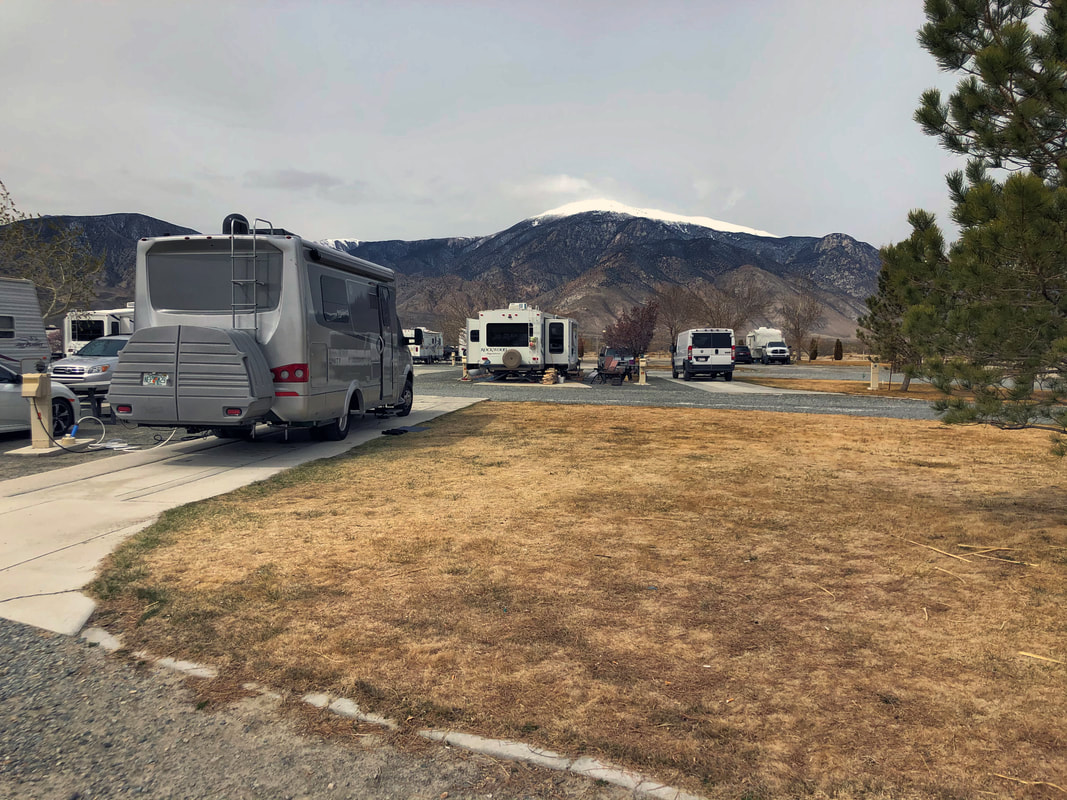




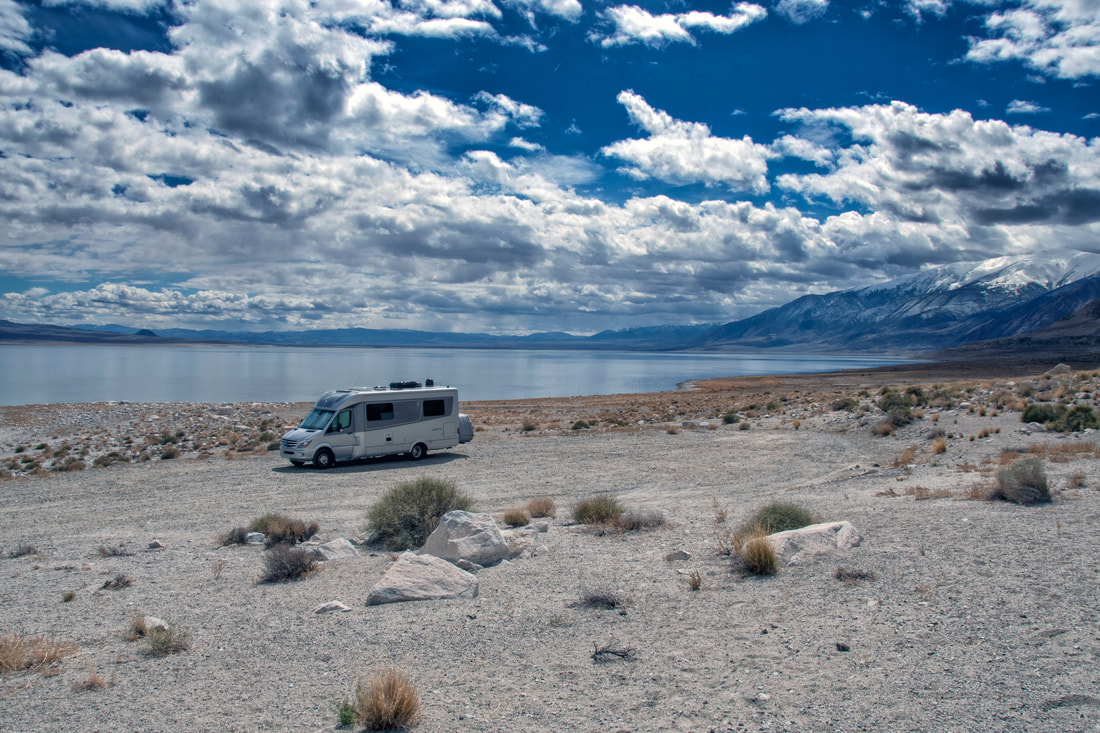


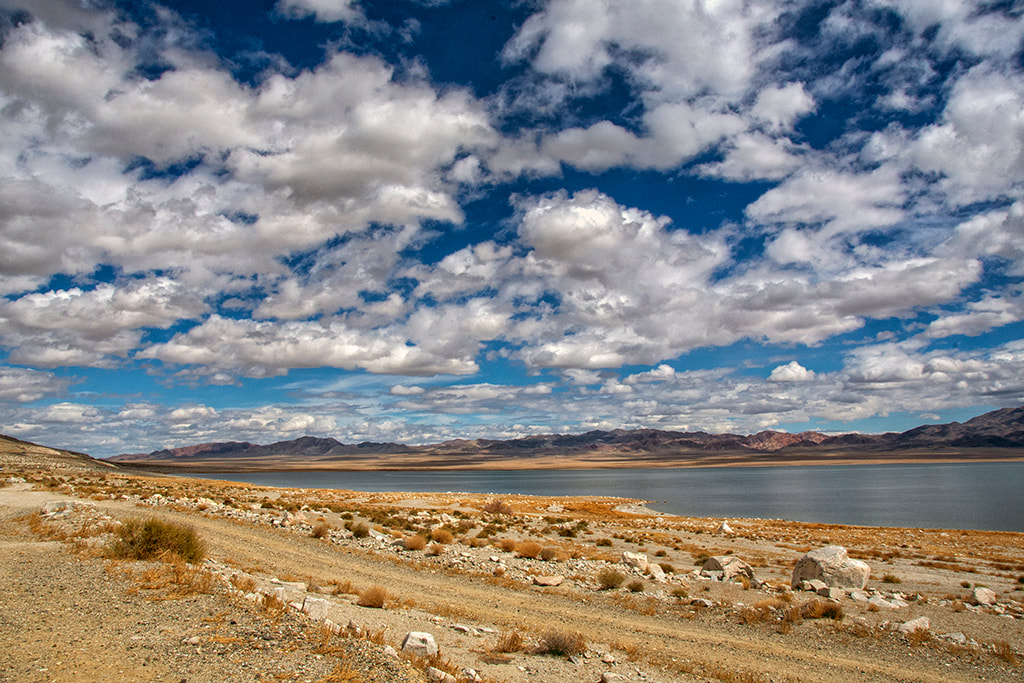
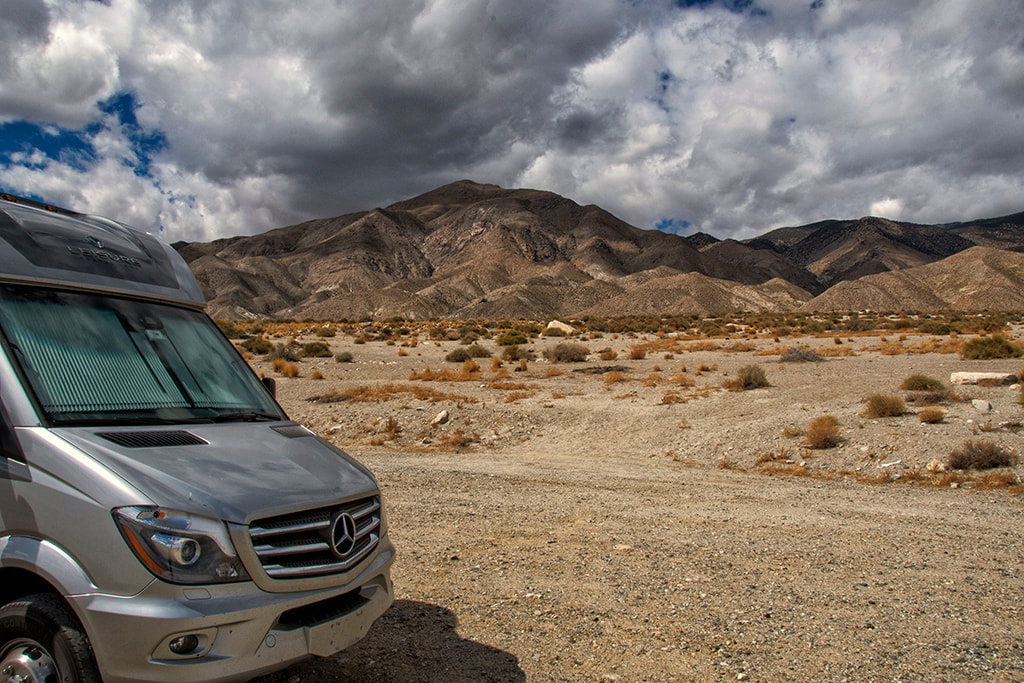







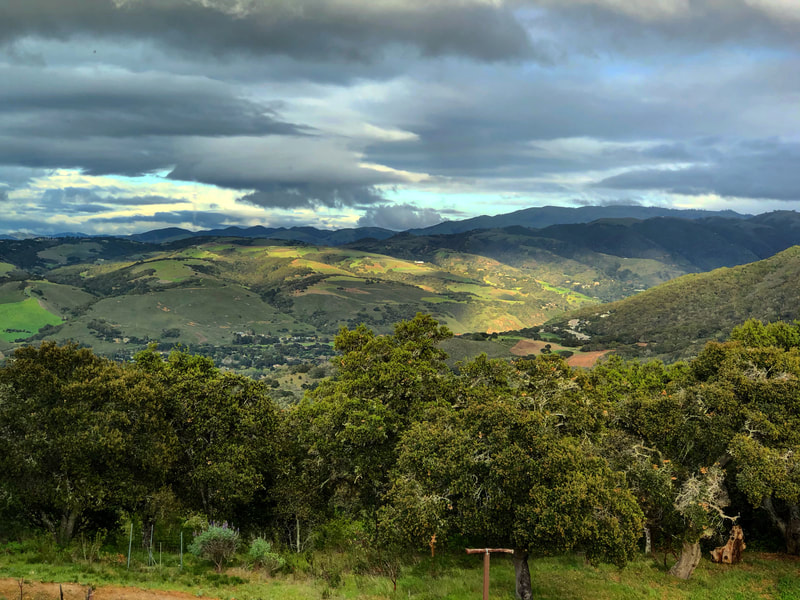



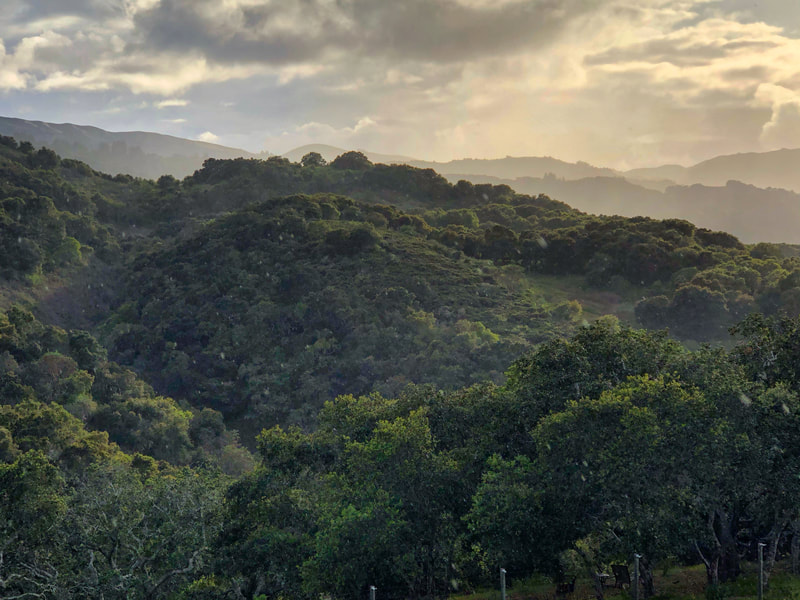
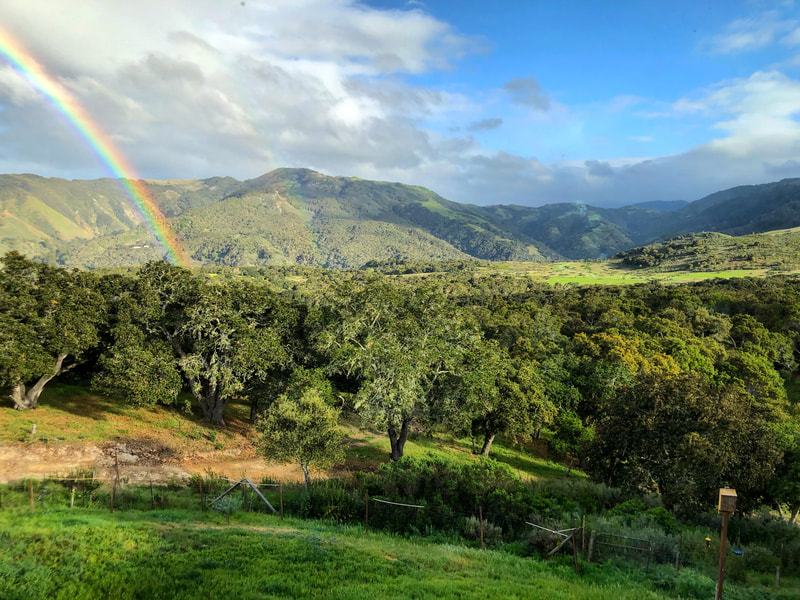





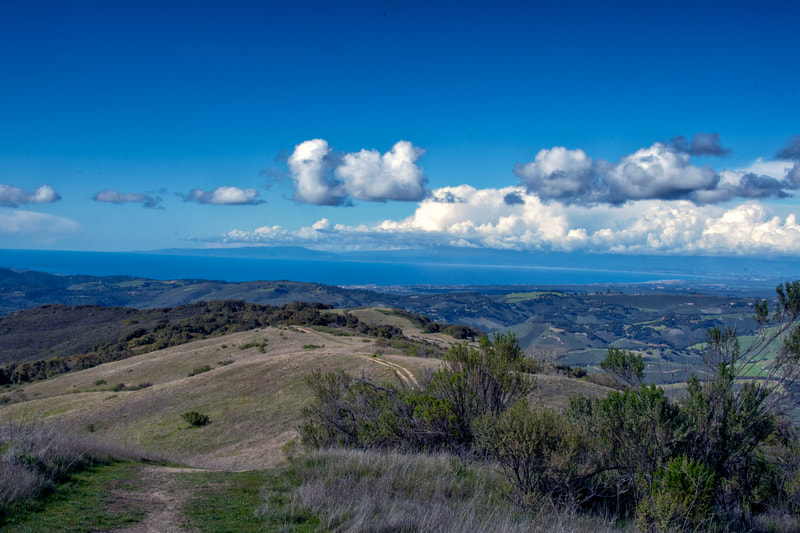

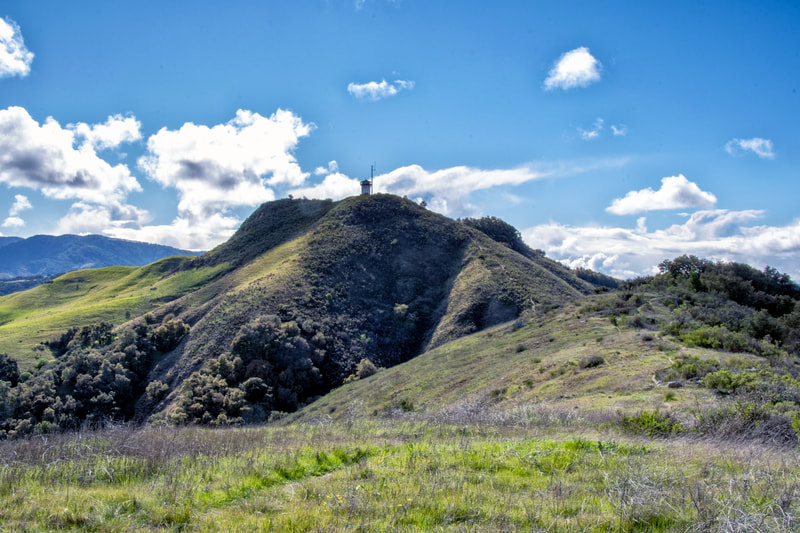




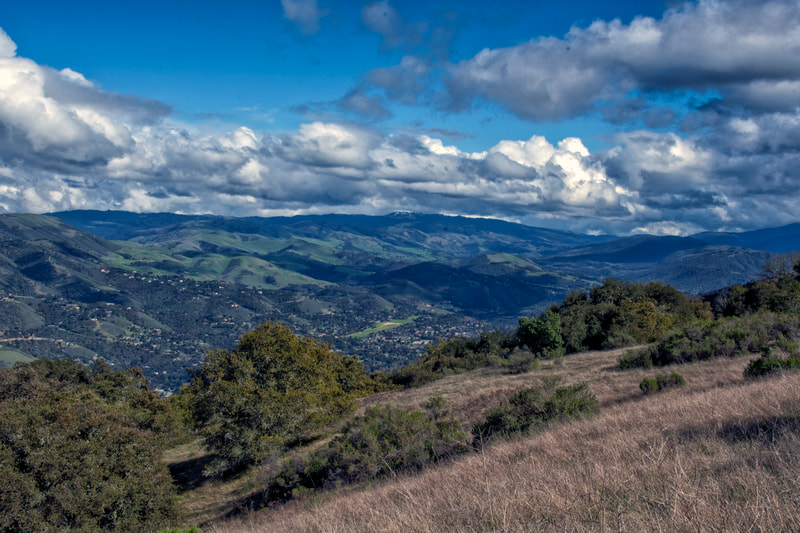







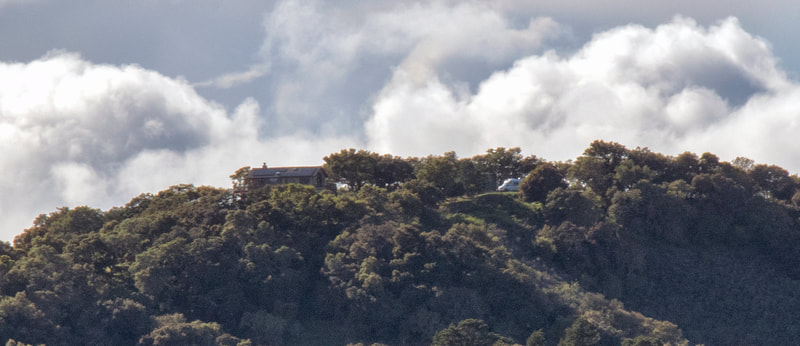

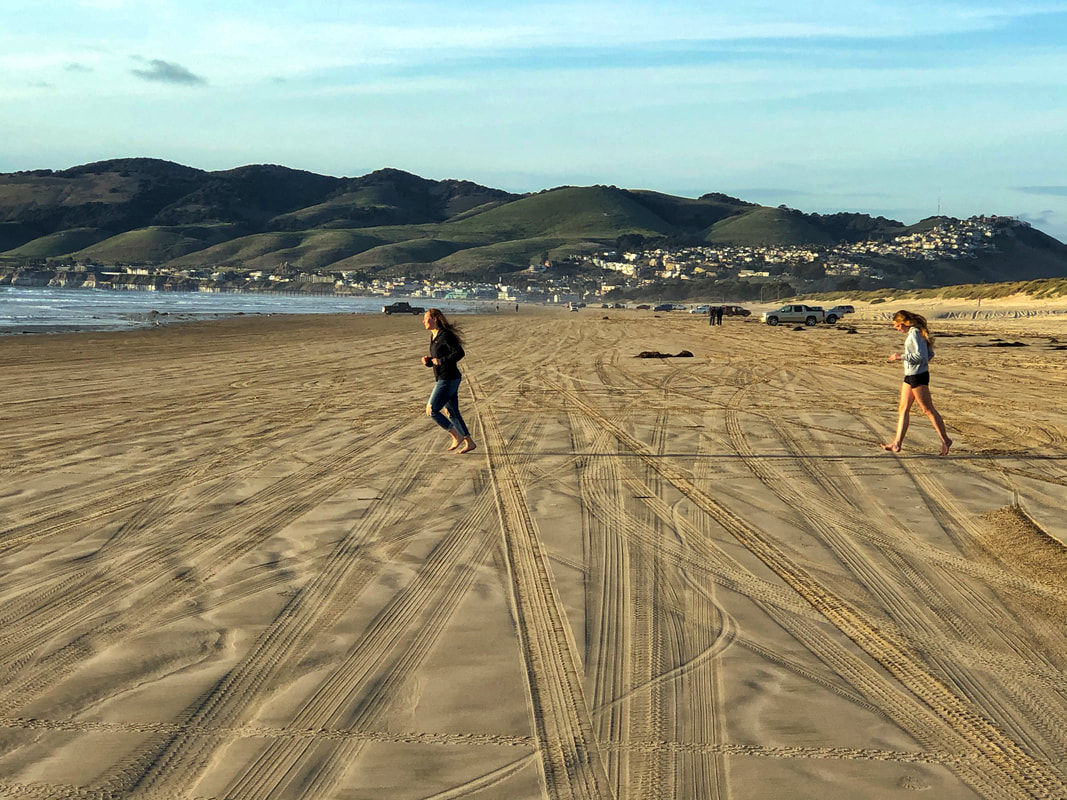


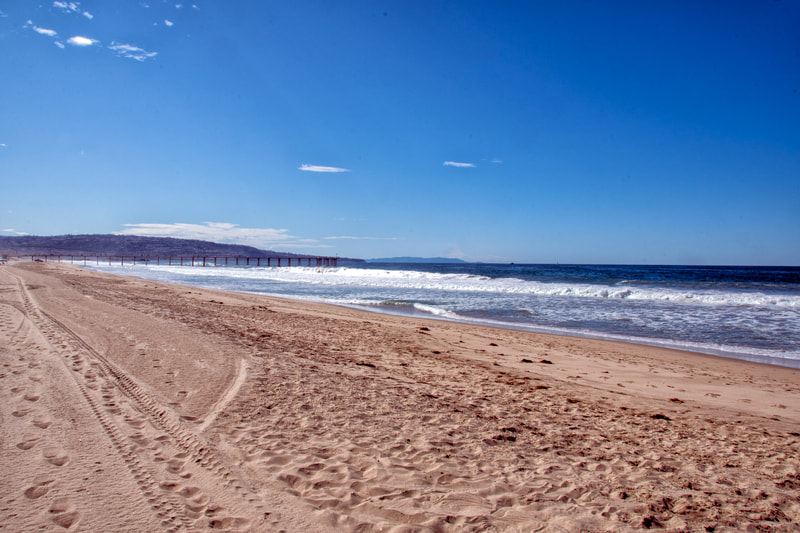



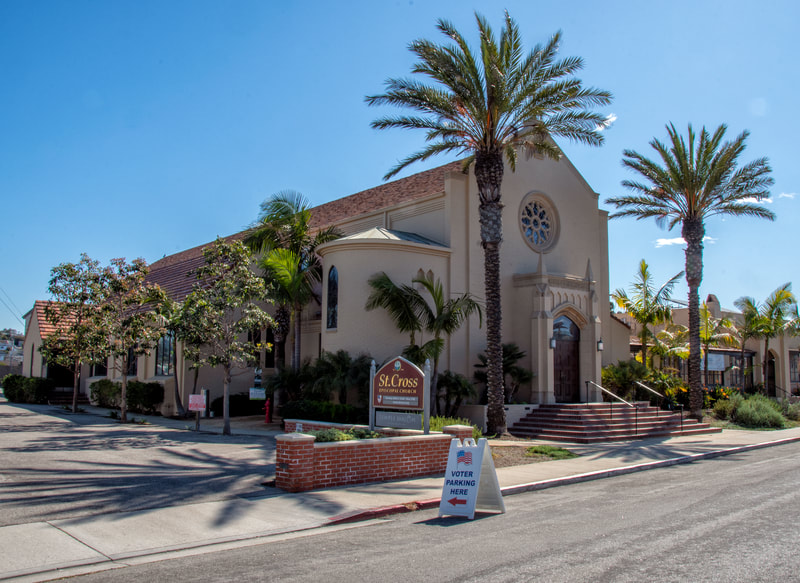



 RSS Feed
RSS Feed